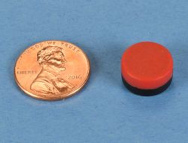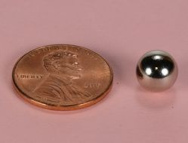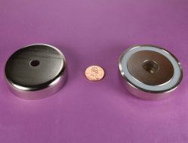We're often asked what the dipole moment of a given magnet is? What does this mean? What is the dipole moment?
Moment is an engineering term used to describe a torque value. For example, if you turn a bolt with 2 ft long wrench, applying 10 lb of force on the end of the wrench, you would be turning the bolt with 10 x 2 = 20 ft lb of torque[1]If you're metrically inclined, you might describe a 44.5 Newton force on a 0.61 meter wrench, yielding a 27.1 N m torque..
By definition, the magnetic dipole moment is the turning moment (the torque that's trying to rotate the magnet) that a magnet "feels" in a given magnetic field. Imagine placing a magnet inside a space that has a strong magnetic field, like the inside of an MRI machine. The magnetic dipole moment is how much torque will try rotating the magnet to align with the MRI's field.
What's a more practical, real world example? Consider a compass needle. The needle itself is a magnet. If it's not pointing north (aligning itself with the earth's magnetic field), the needle will feel a torque trying to rotate it towards north. It's a fairly weak torque, because the earth's magnetic field is so weak (about 0.5 gauss).
Units for dipole moment make sense with this mechanical description: newton meters per Tesla (N m / T). That's newton meters (the torque, force times distance) per Tesla (the field). If you're not used to metric units, you might say the same thing as pound-feet of torque per gauss (lb ft / G). Though technically correct, we've never seen anyone use this unit.
Much more commonly, this unit is expressed in Ampere square meters, A m2. Electrical engineers and physicists find this useful. It's an easy conversion: 1 A m2 = 1 N m / T. You can calculate the dipole moments value yourself using this formula dipole moment formula. Or use our online Pull Force Calculator, which calculates the dipole moment.



